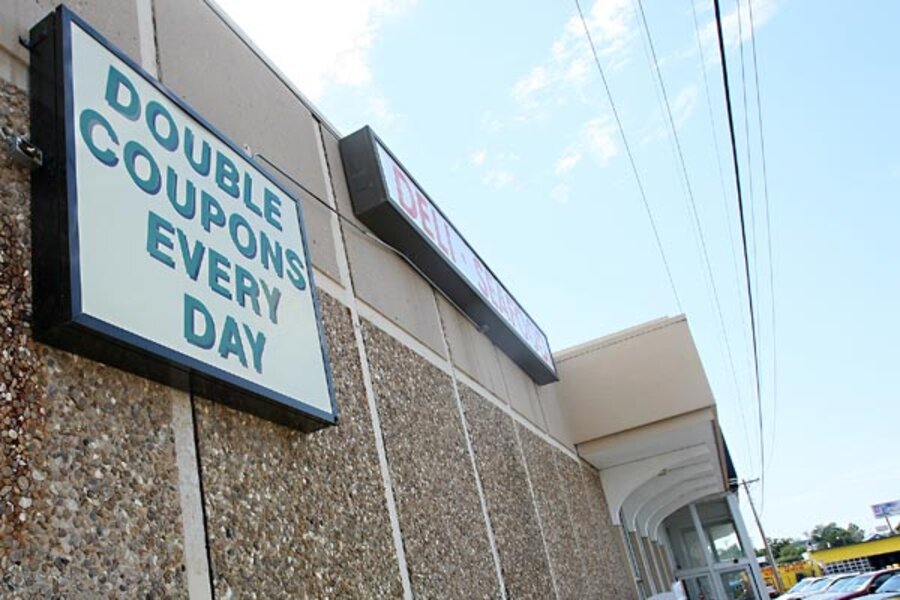Coupons made simple
Loading...
Saving Pennies or Dollars is a new semi-regular series on The Simple Dollar, inspired by a great discussion on The Simple Dollar’s Facebook page concerning frugal tactics that might not really save that much money. I’m going to take some of the scenarios described by the readers there and try to break down the numbers to see if the savings is really worth the time invested.
Michelle said, “COUPONS!!!! you know.. like the ‘coupon queens’. Does it really save you? And is what you are buying really healthy for you? compared to raw foods, whole foods with no chemicals? I’m not knocking it, only saying really? to those that worship it– it’s an obsession for many people as opposed to being a money saver. I tried it for a while. I was spending more money while I was couponing, because most of the coupons for the best deals… well, it just doesn’t make sense…. logically.”
This topic has really been pushed to the forefront lately with the advent of the TLC “reality” series Extreme Couponing, which focuses on the ‘coupon queens’ that Michelle refers to above. These individuals use a wealth of tactics to demonstrate tremendous reductions in their overall grocery receipts.
From my perspective, as someone who has both obsessively couponed and not couponed at all, I think there is a varying degree of value in couponing depending on a lot of other factors in your life. Let’s walk through them.
First, how much do you value the nutritional content of what you eat? It is much harder to gain ground with coupons if many of your meals revolve around fresh ingredients. You typically don’t find coupons for a fresh head of broccoli, fresh fish, or things like that. On the other hand, if your meals frequently consist of things like Hamburger Helper or a Stouffer’s frozen lasagna, there is a tremendous amount of savings to be had from couponing for food purposes. After having children and becoming concerned about watching their diet, we tend to buy many more raw ingredients than we once did, which reduces the usefulness and value we get from digging through coupons for food items.
Second, do any stores in your area offer double coupon programs? I find that doubling the face value of a coupon is often essential in really making it worthwhile to use. Many coupons have a face value of far less than a dollar, which is a pretty small amount compared to the cost of many items on the shelf at your typical grocery or department store these days. $0.40 off of an item costing $4? $1 off an item costing $8? It’s not as high impact as it once was, especially when you consider the next factor.
Third, do you really need the name brand item over the generic item? Quite often, the generic version of the item is functionally identical to the name brand. This is true so often that I always try out the generic before deciding if there is a genuine product quality reason that I should stay with the name brand version.
Finally, are you willing to wait for store sales? A system that pairs coupons up with corresponding store sales requires organization, patience, and time, but can definitely reap some benefits. There are significant savings to be had here, but it’s hard to consistently quantify and it requires a significant time investment. If you do have some significant time, a coupon saving strategy can pay off. This is particularly true if you burn an hour watching television each night, as such coupon planning can easily be done on the couch.
In testing these theories, I took a coupon flyer from the Sunday newspaper to the grocery store late last week to do some price comparisons. I only included items I could find in my local Super Target (so chosen because they have both an extensive household product section and extensive groceries).
What I found was that I would save $21.40 if I used every single coupon in the booklet that had a matching item on the shelf. If the store offered double couponing, that would have been $42.80.
However, if I excluded all of the items that I can’t see myself ever realistically buying, the total went down to $8.40. Again, with double couponing, that total goes up to $16.80.
If I then compared the items in that $8.40 to their generic equivalents and bought the generics (or on-sale name brands of another type) when they were less expensive even after the coupon on the name brand item and only counted the savings over generic on the items I would have purchased, my savings went down to $0.73. With double couponing, that total is $7.11.
In other words, every single factor I mentioned – the presence of double couponing, your actual food purchasing habits, your willingness to use generics and competing items, pairing coupons with store sales – can have a huge effect on the usefulness of your couponing. At $42.80, couponing is well worth the time. At $0.73, not so much.
Couponing works well in some situations – people with sufficient time who value reducing their meal costs above all else and are in areas where double couponing is offered – and not as well in others – time-strapped people who value the nutritional contents of their meal more than the cost (to at least some degree) and don’t have double couponing available.





